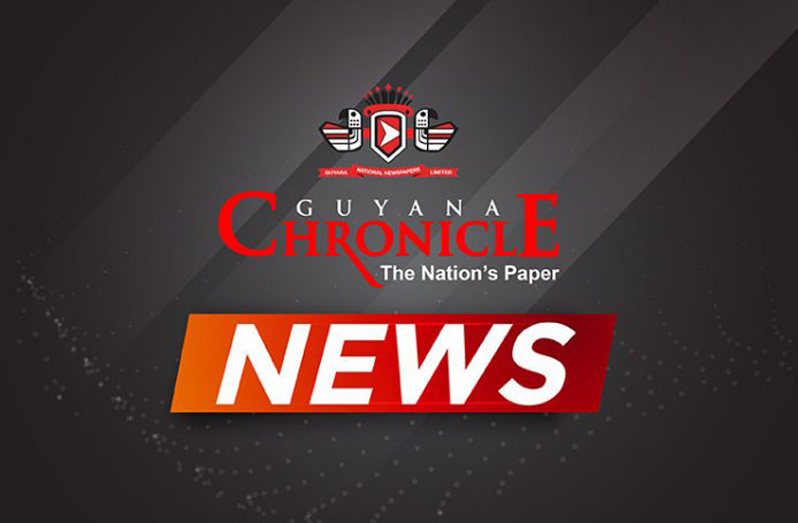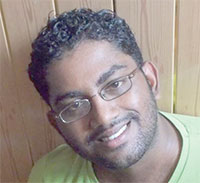THE first Pride Parade in Guyana, and the English-speaking Caribbean, flew along the roads, carried by the strength, the youth, the vitality, the joy, the courage and the sheer will to reject oppression, that was expressed by every single person who marched and danced and sang from Parade Ground all the way to Square of the Revolution.
It was an important moment in history, one that most people might not recognise as such immediately. But fifty years into the future, when human rights have been granted to all, when members of the LGBTQ people are accepted as a part of the multi-coloured fabric of Guyana society, the young people of the future will look back at this Pride Parade and they will thank every person who came out on Sunday, June 3, 2018 to fight for human rights. This parade is an iconic moment in Guyanese history, and it will forever remain so.
JUST A HINT OF NERVOUSNESS
The essence of the parade and its purpose in this country align perfectly with many other liberation efforts and significant events that have withstood time to emerge as important junctures, blossoms on the branches of Guyanese history.
There is symbolism to be found even in the ending and starting points of the parade. The Parade Ground and Square of the Revolution are both important landmarks that represent freedom and the removal of oppression, themes that are very much present in the narrative of the LGBTQ community in Guyana.
With intersectionality in mind, it is useful to note that racial oppression, of which both the Parade Ground and Square of the Revolution remind us, is much the same as homophobia, since it is a denial of the human rights of certain sections of society. It is wrong to seek religious tolerance and be unable to tolerate gay men.
It is regressive to be feminist, but to not support lesbians. It is hypocritical to seek racial harmony while seeking to oppress the LGBTQ community. This is the lesson that emerged out of the points chosen to begin and end the parade.
As the crowd marched from one point to the other, the line that emerged is really one that can truly stand for the intersection that needs to become visible to the Guyanese people, in order for them to truly understand that the denial of the human rights for one is the denial of the human rights for all.
On the afternoon, as the LGBTQ peoples and allies waited for the music truck to arrive, the atmosphere was one of excitement, touched by just a hint of nervousness. We had all seen the media reports of the ‘Georgetown Ministers’ Fellowship’, and so, when onlookers began to congregate on the borders of Parade Ground, we naturally expected to be confronted, at least, by people some of us initially perceived to be against the parade.
One ally remarked, “Perhaps they’re just curious.” The play on the word ‘curious’ was not lost on anyone who heard, but realistically, the onlookers were definitely curious, in the traditional sense of the word, as they simply looked – in wonder, amazement, concern, sceptically – at the parade as it unfolded before and became full-fledged, morphing along the road as the band of paraders swept along the sweets in a swirl of colour and flags and feet pumping to soca music.
Indeed, the onlookers only became numerous as the march went on. People stared, people laughed, people joined in the celebration, people danced, people hurried away, but no one became confrontational, no one said anything homophobic.
The response of the people on the road that day was simply one of acceptance and tolerance, and it is the way I want to remember the public. It is the way the rest of Guyana should aim to respond to the LGBTQ community.
300 MARCHERS
There were approximately about three hundred persons in the parade – a staggering number considering that transwomen are still murdered in our society and most of the country remains homophobic, their homophobia motivated by religion and the existing laws that criminalise homosexual acts.
Of course, not everyone who was a part of the parade is a member of the LGBTQ community. There were many straight allies present. There were people falling all across the spectrum: straight people, gay men, lesbians, bisexual people, queer people, pan-sexuals, transgender persons. It was truly representative of the wide array of sexualities that constitute the modern spectrum of human sexuality.
Diversity was also present in the ethnic makeup of the parade, with people from all of the ethnic groups in Guyana present. On another level, diversity existed in the socioeconomic backgrounds of the supporters – a band that included doctors, teachers, journalists, students, musicians, artists, writers, the unemployed, accountants, etc.
Even though the revellers comprised mostly young people, there were a number of older folks who came out and walked with us to show their solidarity and support for the marginalised who are a part of Guyana’s LGBTQ community.
CAMARADERIE AND BELONGING
As for the parade itself, I struggle to describe it, even as I write this. Words seem insufficient. It is now more of a feeling than a memory, and how does one sufficiently describe a feeling in such a way so as to have a reader feel that same, exact feeling? Can it be done? How does one even begin to process the thought of all the LGBTQ-identifying people throughout the centuries – from the Amerindians who first lived here, to lesbians in stiff Victorian dresses, to East Indian men who preferred to flee their villages along with their partners on one of the ships bound for the Indies – all of whom are spiritual ancestors to the Pride Parade that was to be celebrated, but whose own lives must have been shrouded in secrets and shadows, smothered by the church or the fear of persecution.
How do we explain the sense of good fortune that rarely comes to LGBTQ people in Guyana, to know that you are a part of something that is about, but also about so much more than you? How do we explain the sense of camaraderie and belonging? How do we show what trying on colourful wings or spiked, carnivalesque bras, or feathered headdresses means to us and our ability to self-express?
How do let people know that glitter and Diana Ross “I’m Coming Out” are emblems and anthems that signify the richness of LGBTQ history and markers of our identity? How else do we do all of these things other than to incorporate all of them into a single parade and march down the road, fingers snapping, hips gyrating, breasts shaking, for all the world to see?
End to homophobia
This Pride Parade was a plea for an end to homophobia. The Pride Parade was an opportunity for LGBT people to express themselves. The Pride Parade allowed us to pay homage to every other LGBT member and ally who came, and marched, before us.
The Pride Parade let the many closeted, fearful young men and women in Guyana know that they are not alone. The Pride Parade was about togetherness, and it was about love.
At the end of the march, when we converged on Square of the Revolution and night covered us all, and SASOD’s Joel Simpson said that we had just taken part in the first ever Pride Parade not only in Guyana but also in the entire English-speaking Caribbean.
He reminded us that LGBTQ people contribute to, help to create, and help to define various sectors in Guyana, it was a moment that truly encapsulated the impact we have on people and on their lives. We are men and women, old and young, from all walks of life. We are doctors, engineers, actors, designers, vendors, policemen, nurses, cane-cutters, students. We are everywhere; glitter-stained or wiped clean, feminine or hyper-masculine, rich or poor, well-known or closeted.
LGBTQ people exist, and we have the right to exist, to love, to be, and every other right belonging to everyone else in Guyana.



.jpg)








